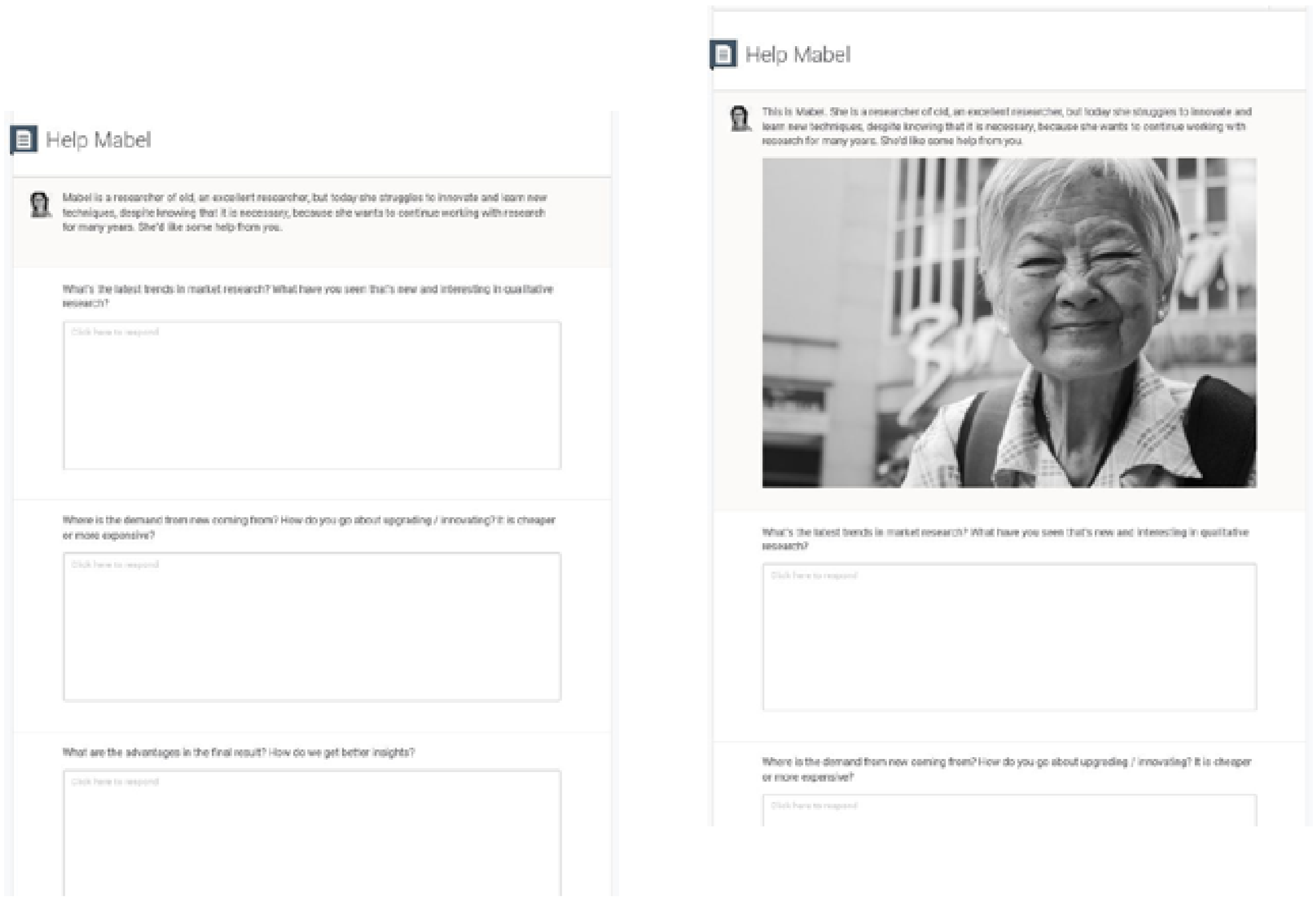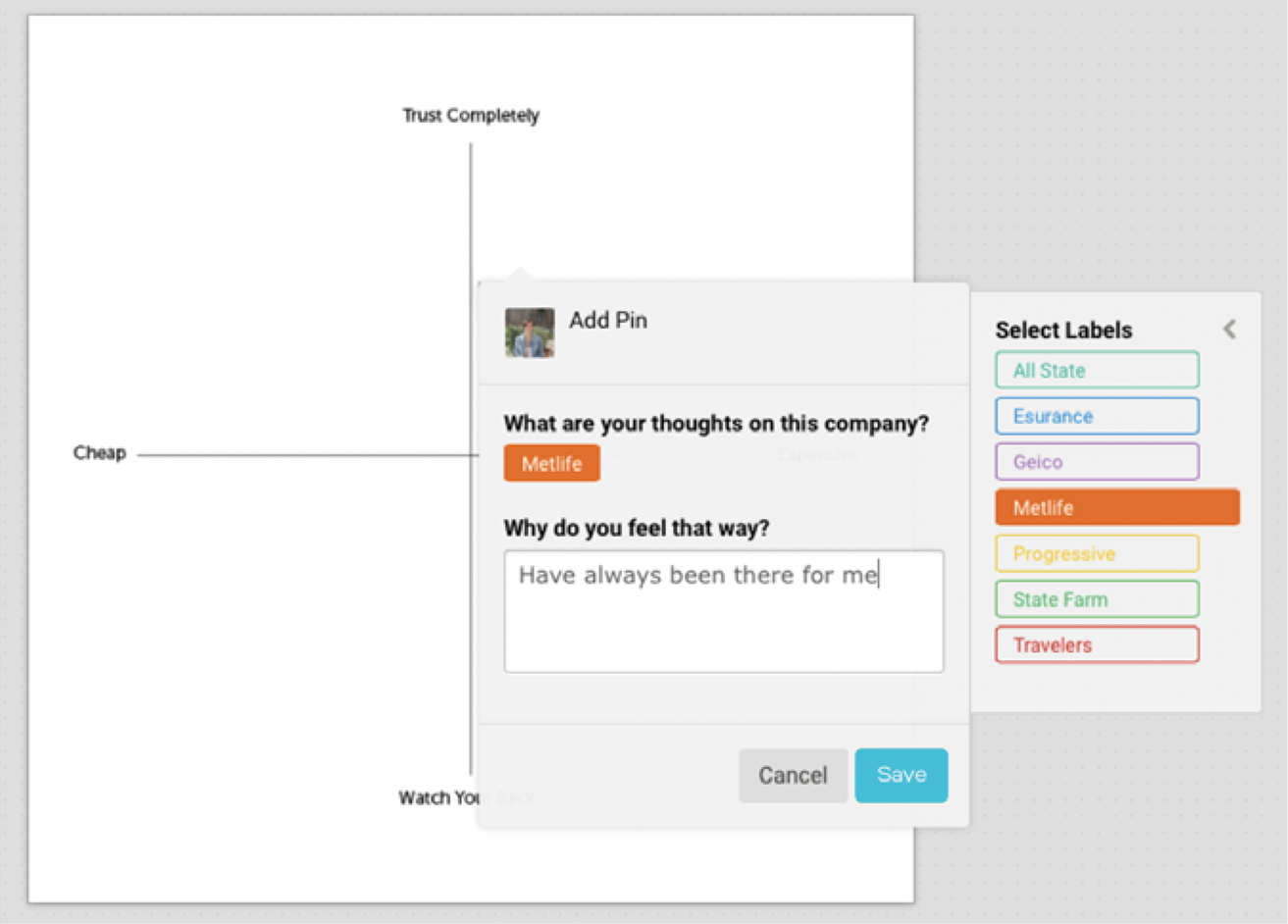Five techniques to build a successful study
Activity design

Digital qualitative research can yield an extremely rich view of people’s lives, we just need to pause and consider the best way to approach it. The online medium is different, and as a result the research approach needs to adapt. Forsta is built upon the principle of getting participants to engage in activity-based research (Activity Design), rather than a traditional question and answer-based approach. This allows researchers to tap into the following:
- Behaviors: Diaries and journals; capturing the moment in time.
- Emotions: Specific feelings; tell us about a time that really frustrated you, draw a picture of how you feel, tell us about a time you were surprised by customer service, etc. These types of questions really open people up in ways that direct questions will not.
- Context: Environment, inventory, choices, out of box experiences; glean rich understanding as people narrate their journeys.
1. A picture is worth a thousand words
Just as pictures helps researchers understand the scenes in people’s lives, they are also extremely useful for participants to help them tune into the activity at hand.
Consider the following example of a “Help Mabel” task. In this activity, participants are asked to Help Mabel understand what’s new in the research world by answering her questions. In Example A, the scene is set with an opening paragraph, whereas in Example B, a photograph of Mabel helps frame who she is and provides a clear image of the person to whom the participant is providing information.

2. Use the right medium for the task at hand
This technique relates to two aspects, using the correct device/ screen size for the activity and considering the analysis and types of data input to review.
In terms of devices, laptops and computers are better for more thoughtful, longer responses. This may include letter writing as well as concept canvas activity, where viewing full images, dropping pins and writing responses requires a screen, mouse and keyboard.
Mobile devices are great for just that, those times when participants are mobile and out in the world. This medium works particularly well when giving participants a mission within a retail environment, trend spotting activities or diaries.
An important thing to note is that mobile research doesn’t have to work by itself. It makes a wonderful companion to other forms of research, such as ethnographies, pre-focus group activities, shop-alongs and more.
3. Use a variety of activity types
It is important to mix the types of activities used within a study to fully explore the context, behaviors and emotions surrounding the topic, and obtain a holistic view of the research question. While not all of these components will be necessary within every study, taking a different angle opens the door for deeper insights. For example, you may ask participants to complete a diary that captures a particular behavior or activity, followed by a break up letter to dive into what’s not working and a pitch to a colleague for something that could.
4. Avoid the survey syndrome
This is qualitative research after all, and we need to dig as deeply and insightfully as possible. While there is value in understanding how a person rates a particular brand or experience, we don’t have to simply rely upon “on a scale of 1 to 5, how would you rate x” responses. Using Forsta’s concept canvas tool, we can present a perceptual map and ask people to drop a pin on the quadrant where they’d rate the item, as well as ask why they rated it that way.

5. Allow for breaks
We want to capitalize on existing behaviors of how people document their lives. But we need to keep “the ask” in check. When we asked too much, participants can’t get through the task. For example, researchers cannot give participants 15 questions to get through when they are checking out at the supermarket. We need to be smart and not (too) disruptive, while also keeping the analysis – and what we need to get out of the activity – in mind.
Analytical considerations
We live in a culture of content creators and sharers, and there are multiple formats for expression in research. These include text, images and video…
Text is great for cutting and pasting quotes and provides powerful support for images and video. However, when responding via mobile device, typing on tiny keys and a small screen can be onerous and disruptive for some participants. As a result, you may receive less information.
Images provide an extremely efficient way for participants to express themselves and are generally of decent quality. For researchers, images are fairly easy to analyze quickly, and provide powerful visual material.
Video is the most powerful method of research expression, potentially eliminating the need for text-only entries. For researchers, video provides immersive, multi-sensory material that can deliver high impact during the analysis and reporting stages. Furthermore, using video management platforms, such as Forsta video insights, can reduce analysis time and ease the selection and viewing of specific clips.
Related resources
Improving brand equity through AAU Surveys
Improving brand equity through AAU Surveys How is your brand doing? How much do your customers like or dislike what you have to offer? And, when was the last time you asked them? An important part of driving customer loyalty is having a good understanding of the brand experience. In other words, what is the […]

The definitive guide to designing mobile surveys
The definitive guide to designing mobile surveys According to Pew Research (1) a majority of U.S. consumers own multiple digital devices (desktop/laptop computer, tablet, and smartphone) and they seamlessly move from one platform to another as a part of their everyday lives. It is common for consumers to start an online shopping experience on a […]

7 Secrets of customer experience strategy
7 Secrets of customer experience strategy 7 secrets at a glance Build executive support Strategize and plan Get organized Lose the silos Communicate Add Voice of the Employee Act fast and innovate Over the past few years, Customer Experience (CX) programs have become an established path to delivering enhanced customer experiences, engaging employees and driving […]

Learn more about our industry leading platform
FORSTA NEWSLETTER
Get industry insights that matter,
delivered direct to your inbox
We collect this information to send you free content, offers, and product updates. Visit our recently updated privacy policy for details on how we protect and manage your submitted data.